Optics
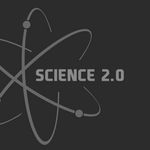
Experiments with ultrashort laser pulses support the idea that quantum interactions between molecules help plants, algae, and some bacteria efficiently gather light to fuel their growth - but that's about it. Key details of nature's vital light-harvesting mechanisms remain obscure, and the exact role that quantum physics may play in understanding them is more subtle than was once thought.
Jessica M. Anna and Gregory D. Scholes of the University of Toronto and Rienk van Grondelle of Vrije Universiteit in Amsterdam, writing in BioScience, describe experiments that employ a technique called 2-D…
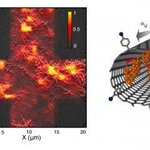
Raman scattering mode is an optical phenomenon, discovered in 1928 by the physicist Chandrasekhara Venkata Raman, that involves the inelastic scattering of photons - the physical phenomenon by which a medium can modify the frequency of the light impinging on it.
The difference corresponds to an exchange of energy (wavelength) between the light beam and the medium. In this way, scattered light does not have the same wavelength as incidental light. The technique has become widely used since the advent of the laser in the industry and for research .
But until now, molecular Raman signals…
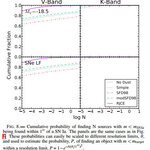
Astronomers have calculated the odds that, sometime during the next 50 years, a supernova occurring in our home galaxy will be visible from Earth and found the chances to be nearly 100% - and it will be visible from telescopes in the form of infrared radiation.
The odds are lower, 20 percent or less, that the shining stellar spectacle would be visible to the naked eye in the nighttime sky. Citizen science astronomers and the government kind have high-powered infrared cameras to point at the sky at a moment's notice, which means they have a solid chance of doing something that's never been…
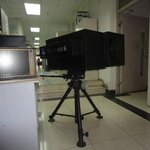
Thermal infrared (IR) energy is emitted from all things which have a temperature greater than absolute zero - so, basically all things worth looking at.
Though mechanical detection of IR radiation has been possible since Samuel Pierpont Langley invented the bolometer in 1880, human eyes are primarily sensitive to shorter wavelength visible light and are unable to detect or differentiate between the longer-wavelength thermal IR "signatures" given off both by living beings and inanimate objects.
Recognizing and identifying an IR source after detection has been more challenging and a recent…

Experiments on individual photons conducted by physicists from the Faculty of Physics at the University of Warsaw (FUW) and the Faculty of Applied Physics and Mathematics at the Gdansk University of Technology (PG), have revealed yet another bizarre feature of the quantum world.
When a quantum object is transmitted, its quantum property, whether it behaves as a wave or as a particle, appears to depend on other properties that at first glance have nothing to do with the transmission, they argue.
Wave-interference experiments are some of the simplest and most elegant, and can be conducted by…
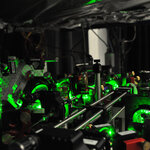
Thermoelectric materials were discovered in the 19th century and have the remarkable property that heating them creates a small electrical current - but adopting them to the 21st century has been a challenge.
The generation of electricity from heat usually involves burning a combustible, which then heats a fluid that brings a mechanical turbine into motion, which eventually produces an electrical current. In thermoelectric materials, the entire cycle that is performed by a heat engine occurs naturally. However, the thermoelectric effect is weak and for the materials known so far, the…
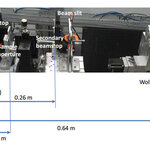
Researchers have developed a new concept for a microscope that would use neutrons, subatomic particles with no electrical charge,
to create high-resolution images
instead of the more traditional beams of light or electrons.
Among other benefits, neutron-based instruments have the ability to probe inside metal objects, such as fuel cells, batteries, and engines, even when in use, and learn details of their internal structure. Neutron instruments are also uniquely sensitive to magnetic properties and lighter elements that are important in biological materials.
Adapting a 60-year-old…
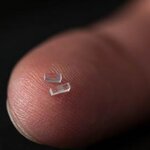
Researchers recently used a laser to accelerate electrons at a rate 10 times higher than conventional technology in a nanostructured glass chip smaller than a grain of rice, an advance that could dramatically shrink particle accelerators for science and medicine.
Because it employs commercial lasers and low-cost, mass-production techniques, the researchers believe it will set the stage for new generations of "tabletop" accelerators.
At its full potential, the new "accelerator on a chip" could match the accelerating power of SLAC's 2-mile-long linear accelerator in just 100 feet,…
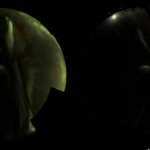
If you want to see Aurora Borealis (the northern lights) in 3-D with your SLR cameras, and even determine the altitude where electrons in the atmosphere emit the light that produces aurora, Ryuho Kataoka from the National Institute of Polar Research in Tokyo, Japan can show you how.
Kataoka came up with an idea for a new method to measure the height of aurora borealis after working on a 3D movie for a planetarium. They used two digital single-lens reflex (SLR) cameras set 8 km apart.
The separation distance between the human eyes is what allows us to see in 3D. When we look at an…
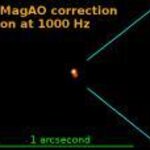
A new type of camera allows scientists to take sharper images of the night sky than ever before. It combines a telescope with a large diameter primary mirror is being used for digital photography at its theoretical resolution limit in visible wavelengths – the light that the human eye can see.
The design team has been developing this technology for more than 20 years at observatories in Arizona, most recently at the Large Binocular Telescope, and has now deployed this latest version in the high desert of Chile at the Magellan 6.5-meter telescope.
As a result, the
images are…